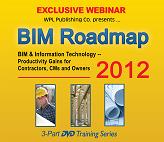Owners are the obvious, intended beneficiaries of completed projects. They expect to occupy the building, to enjoy a fully functional HVAC system along with other equipment and systems deployed on the project, and to be handed over a project "user manual" complete with all warranties, equipment operating instructions, maintenance requirements and any additional reference material needed to repair, replace or make upgrades in the future. As BIM continues its transition into the standard of care for project delivery, much has been made of BIM’s ability to support these owner expectations at close-out. Indeed, initiatives such as COBIE are aimed squarely at this issue. With both federal agencies and private owners increasingly requiring COBIE, or COBIE-esque close-out requirements, this session will explore some of the critical planning steps for owners and why it is necessary to start planning for the transition at the project concept stage, monitor progress during design and construction, and capture best practices upon close-out and turnover.
Registrants who take this session will:
- Learn where to find existing research and resources on BIM for close-out & turnover
- Get a summary overview of COBIE
- Contemplate the strengths and weaknesses of utilizing COBIE-esque requirements
- Review existing common share BIM Execution Plan language for COBIE and COBIE-esque standards and requirements
- Consider the critical subcontractor contracts and planning considerations that enable successful BIM for close-out and facilities management (FM)
- Set strategies for leveraging an Owner’s existing FM environments, software, databases and protocols in a BIM world
- And much, much more!
The A/E, CM and consultant advisors all have a role in managing these concerns for their clients. Using BIM for early decision-making supports both ends of the cradle-to-cradle built world. This session clarifies the significant pay-offs realized by both the construction team and the owner by planning for the close-out and FM phase of the building.
BIM Models and Information Technology in the Field: How Contractors and CMs Are Leveraging Project Data During Construction
Your Instructors: Benjamin Crosby, Yates Construction; John Jurewicz, Lend Lease; Treighton Mauldin, Turner Construction
With BIM models and a game plan in place, contractors can then leverage project data during the construction phase. Learn how contractors and CMs are using BIM and other technologies for coordination, logistics, clash detection, 4D-scheduling and project administration. Learn how contractors are using tablets and kiosks on the jobsite for ready access to drawings and schedules, and how devices and communication technologies are applied to keep the project team involved for problem solving and change control. In addition to the actual tools and benefits to contractors through increased use of information technologies in the field, our guest panelists will talk about the transitions project managers must make in their own management and administration processes, what new skills they should anticipate learning and how the jobsite communication and documentation process will evolve.
This 90-minute presentation will show you how to:
- Learn the different types of BIM tools available, including:
♦ Clash detection
♦ Coordination/collaboration of crews and subs
♦ 4D scheduling, including cost loaded schedules
♦ Visualization/walkthru's
♦ Laser scanning existing conditions
♦ Temporary construction models - scaffolds, form work, cranes, etc.
♦ Fabrication
- Integrate different systems and working with subs
- Utilize tablets for documentation and to replace drawings sets and other uses
- Solve technology issues such as job-wide WiFi
- Understand how the "cloud" applies to the field
- Identify real-time as-builts and punch-list applications

